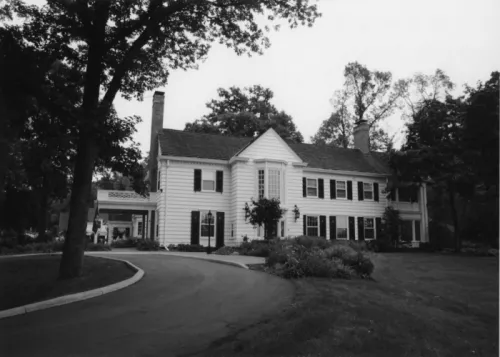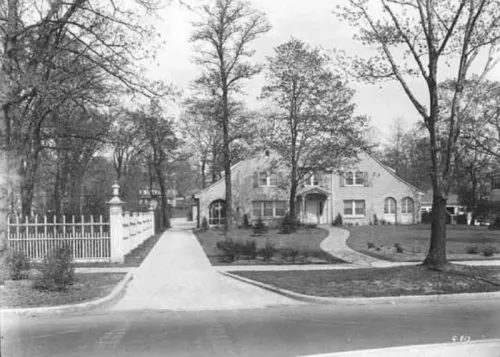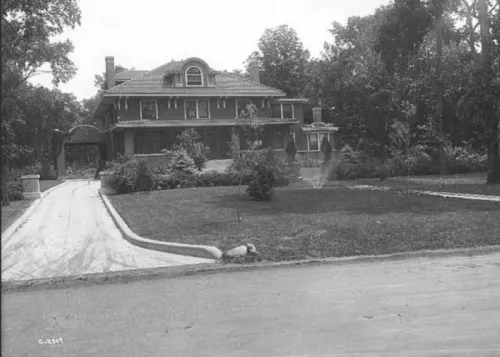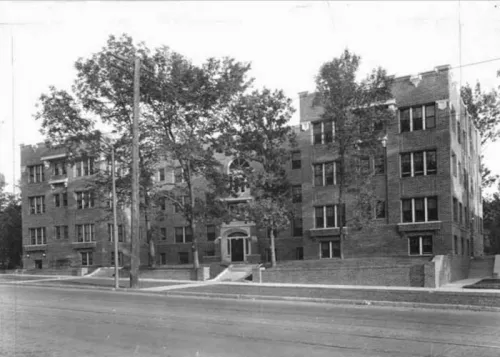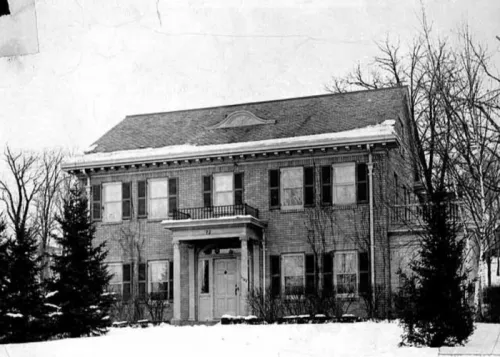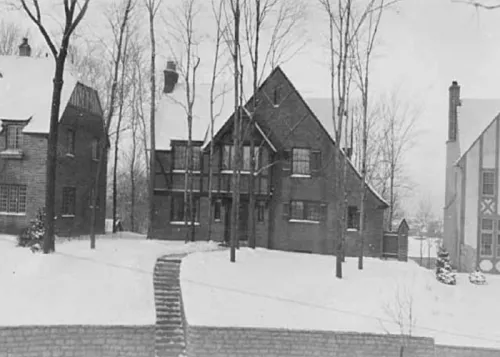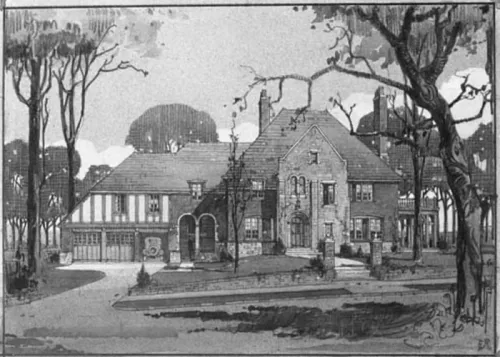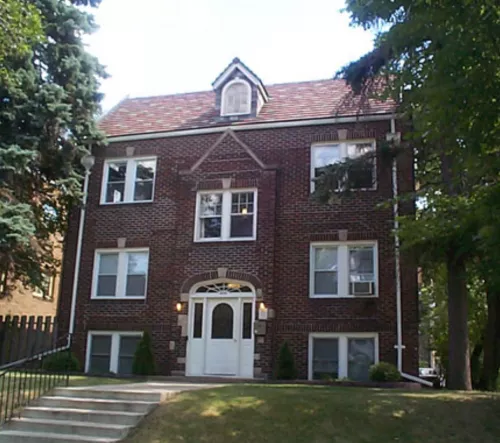Share what you know,
and discover more.
Share what you know,
and discover more.
Nov 18, 2011

-

- Dave D
This old University of Minnesota house: a peek inside Eastcliff
From the article: This old University of Minnesota house: a peek inside Eastcliff written by Tim Post, 11/18/2011 The communications folks at the U of M gave members of the media a tour of Eastcliff today, the official residence of the school’s president. The current residents are U of M president Eric Kaler and his wife Karen, who moved in this summer. The purpose of the tour, according to our guides, was to “demystify” Eastcliff. They say the public gets the impression the 1922 mansion serves solely as the Kaler’s home, and they have the run of the property. Not so says Lyndell King, who heads up the Eastcliff Technical Advisory Committee (she’s also the director of the Weisman Art Museum on campus). King says Eastcliff serves as a gathering space for a number of events during the year, everything from fundraising dinners to events honoring U of M faculty. So why was this “demystification” required? My sense is the public wonders what’s going on inside this mansion each time there’s a major renovation, which tends to take place just as a new president moves in. The latest renovation included a new kitchen in the upstairs residence, a rehabbed guest house/pool house in the backyard, and a new security system on the property. The price tag for the renovations was over $500,000 and was paid for with a mix of private donations and U of M funds. So here’s a quick peek inside Eastcliff. Near the mansion’s front entrance is the stairway to the Kaler’s private second-floor residence. If you like to hit open houses to check out how people live, you’ll be disappointed, it wasn’t part of the tour. If you attend a dinner honoring U of M faculty, or if you’re a donor being pressed to give a little more cash, you might find yourself here in Eastcliff’s dining room. The Kaler’s picked out the art throughout the house, which comes from the U’s Weisman Art museum. Eastcliff’s living room. The shelves in this room are lined with books on the arts in Minnesota, and the room itself features art and sculptures from the Weisman. A scene from Eastcliff’s backyard. This part of the property has gone through major renovations during the past decade, including security upgrades, repairs to a backyard pool, and a rebuilt guest house.
This old University of Minnesota house: a peek inside Eastcliff
From the article: This old University of Minnesota house: a peek inside Eastcliff written by Tim Post, 11/18/2011 The communications folks at the U of M gave members of the media a tour of Eastcliff today, the official residence of the school’s president. The current residents are U of M president Eric Kaler and his wife Karen, who moved in this summer. The purpose of the tour, according to our guides, was to “demystify” Eastcliff. They say the public gets the impression the 1922 mansion serves solely as the Kaler’s home, and they have the run of the property. Not so says Lyndell King, who heads up the Eastcliff Technical Advisory Committee (she’s also the director of the Weisman Art Museum on campus). King says Eastcliff serves as a gathering space for a number of events during the year, everything from fundraising dinners to events honoring U of M faculty. So why was this “demystification” required? My sense is the public wonders what’s going on inside this mansion each time there’s a major renovation, which tends to take place just as a new president moves in. The latest renovation included a new kitchen in the upstairs residence, a rehabbed guest house/pool house in the backyard, and a new security system on the property. The price tag for the renovations was over $500,000 and was paid for with a mix of private donations and U of M funds. So here’s a quick peek inside Eastcliff. Near the mansion’s front entrance is the stairway to the Kaler’s private second-floor residence. If you like to hit open houses to check out how people live, you’ll be disappointed, it wasn’t part of the tour. If you attend a dinner honoring U of M faculty, or if you’re a donor being pressed to give a little more cash, you might find yourself here in Eastcliff’s dining room. The Kaler’s picked out the art throughout the house, which comes from the U’s Weisman Art museum. Eastcliff’s living room. The shelves in this room are lined with books on the arts in Minnesota, and the room itself features art and sculptures from the Weisman. A scene from Eastcliff’s backyard. This part of the property has gone through major renovations during the past decade, including security upgrades, repairs to a backyard pool, and a rebuilt guest house.
Nov 18, 2011
This old University of Minnesota house: a peek inside Eastcliff
From the article: This old University of Minnesota house: a peek inside Eastcliff written by Tim Post, 11/18/2011The communications folks at the U of M gave members of the media a tour of Eastcliff today, the official residence of the school’s president. The current residents are U of M president Eric Kaler and his wife Karen, who moved in this summer.
The purpose of the tour, according to our guides, was to “demystify” Eastcliff. They say the public gets the impression the 1922 mansion serves solely as the Kaler’s home, and they have the run of the property.
Not so says Lyndell King, who heads up the Eastcliff Technical Advisory Committee (she’s also the director of the Weisman Art Museum on campus).
King says Eastcliff serves as a gathering space for a number of events during the year, everything from fundraising dinners to events honoring U of M faculty.
So why was this “demystification” required? My sense is the public wonders what’s going on inside this mansion each time there’s a major renovation, which tends to take place just as a new president moves in.
The latest renovation included a new kitchen in the upstairs residence, a rehabbed guest house/pool house in the backyard, and a new security system on the property. The price tag for the renovations was over $500,000 and was paid for with a mix of private donations and U of M funds.
So here’s a quick peek inside Eastcliff.
Near the mansion’s front entrance is the stairway to the Kaler’s private second-floor residence. If you like to hit open houses to check out how people live, you’ll be disappointed, it wasn’t part of the tour.
If you attend a dinner honoring U of M faculty, or if you’re a donor being pressed to give a little more cash, you might find yourself here in Eastcliff’s dining room. The Kaler’s picked out the art throughout the house, which comes from the U’s Weisman Art museum.
Eastcliff’s living room. The shelves in this room are lined with books on the arts in Minnesota, and the room itself features art and sculptures from the Weisman.
A scene from Eastcliff’s backyard. This part of the property has gone through major renovations during the past decade, including security upgrades, repairs to a backyard pool, and a rebuilt guest house.
Posted Date
Jan 12, 2022
Historical Record Date
Nov 18, 2011
Source Name
MPR News
Delete Story
Are you sure you want to delete this story?
Jun 15, 2000
Jun 15, 2000

-

- Dave D
National Register of Historic Places
Excerpt from the National Register of Historic Places. This house in particular has a very lengthy description of the contributing buildings. Follow the link to connect directly to the application to learn more. The Edward Sr. and Markell Brooks House in Saint Paul, known as ‘Eastcliff’ has drawn wide attention since its construction in 1921. A stately manor, the estate consists of a large two-level Colonial Revival main house, and two auxiliary buildings consisting of a five-stall garage with an apartment above, and a bathhouse. The consideration of its National Register historic significance falls under Criterion C -the embodiment of distinct characteristics of a type, period or method of construction. The estate was built during the period of the 1920s, and embodies many of the flamboyant cultural influences found in that decade. The original owner and occupant of the building was prominent Northwest lumberman Edward Brooks, who hired the celebrated architect Clarence H. Johnston, Sr., and his firm to design the home. The subsequent main house expansion, the garage construction, bathhouse expansion, and pool relocation were also done by the Johnston firm in 1930. Although the estate has experienced more recent alterations to the grounds and the interior, Eastcliffremains one of Saint Paul's best examples of 1920s Colonial Revival style architecture, and a grand representation of the Johnston firm’s domestic architecture. According to Edward Brooks Jr. (the son of the original owner), the decision to build a house in the Colonial Revival style was determined in part by a fondness for a home of this architectural type in UpState New York—the residence of the Coonley's, very close family friends. It was also a very popular residential style in the United States during the 1920s and 1930s. Colonial Revival architecture is a product of the Philadelphia Centennial of 1876 when early American building styles received widespread attention. Advances in printing methods during the closing years of the nineteenth century allowed for the national circulation of books and periodicals featuring accurate illustrations of original colonial American homes. These home styles satisfied a contemporary popular craving for a truly ‘American’ architectural expression, as opposed to relying upon English, French or Spanish models for their buildings. The early decades of the Colonial Revival architectural movement were marked by a relatively free interpretation of the historic originals. The tenor matured somewhat at the turn of the century, leading to the re-creation of historically accurate details and proportions. Meanwhile, advances in technology allowed for the production of elaborate detailing in wood at a cost the majority of homebuilders could afford.
National Register of Historic Places
Excerpt from the National Register of Historic Places. This house in particular has a very lengthy description of the contributing buildings. Follow the link to connect directly to the application to learn more. The Edward Sr. and Markell Brooks House in Saint Paul, known as ‘Eastcliff’ has drawn wide attention since its construction in 1921. A stately manor, the estate consists of a large two-level Colonial Revival main house, and two auxiliary buildings consisting of a five-stall garage with an apartment above, and a bathhouse. The consideration of its National Register historic significance falls under Criterion C -the embodiment of distinct characteristics of a type, period or method of construction. The estate was built during the period of the 1920s, and embodies many of the flamboyant cultural influences found in that decade. The original owner and occupant of the building was prominent Northwest lumberman Edward Brooks, who hired the celebrated architect Clarence H. Johnston, Sr., and his firm to design the home. The subsequent main house expansion, the garage construction, bathhouse expansion, and pool relocation were also done by the Johnston firm in 1930. Although the estate has experienced more recent alterations to the grounds and the interior, Eastcliffremains one of Saint Paul's best examples of 1920s Colonial Revival style architecture, and a grand representation of the Johnston firm’s domestic architecture. According to Edward Brooks Jr. (the son of the original owner), the decision to build a house in the Colonial Revival style was determined in part by a fondness for a home of this architectural type in UpState New York—the residence of the Coonley's, very close family friends. It was also a very popular residential style in the United States during the 1920s and 1930s. Colonial Revival architecture is a product of the Philadelphia Centennial of 1876 when early American building styles received widespread attention. Advances in printing methods during the closing years of the nineteenth century allowed for the national circulation of books and periodicals featuring accurate illustrations of original colonial American homes. These home styles satisfied a contemporary popular craving for a truly ‘American’ architectural expression, as opposed to relying upon English, French or Spanish models for their buildings. The early decades of the Colonial Revival architectural movement were marked by a relatively free interpretation of the historic originals. The tenor matured somewhat at the turn of the century, leading to the re-creation of historically accurate details and proportions. Meanwhile, advances in technology allowed for the production of elaborate detailing in wood at a cost the majority of homebuilders could afford.
National Register of Historic Places
Excerpt from the National Register of Historic Places. This house in particular has a very lengthy description of the contributing buildings. Follow the link to connect directly to the application to learn more.The Edward Sr. and Markell Brooks House in Saint Paul, known as ‘Eastcliff’ has drawn wide attention since its construction in 1921. A stately manor, the estate consists of a large two-level Colonial Revival main house, and two auxiliary buildings consisting of a five-stall garage with an apartment above, and a bathhouse. The consideration of its National Register historic significance falls under Criterion C -the embodiment of distinct characteristics of a type, period or method of construction. The estate was built during the period of the 1920s, and embodies many of the flamboyant cultural influences found in that decade. The original owner and occupant of the building was prominent Northwest lumberman Edward Brooks, who hired the celebrated architect Clarence H. Johnston, Sr., and his firm to design the home. The subsequent main house expansion, the garage construction, bathhouse expansion, and pool relocation were also done by the Johnston firm in 1930. Although the estate has experienced more recent alterations to the grounds and the interior, Eastcliffremains one of Saint Paul's best examples of 1920s Colonial Revival style architecture, and a grand representation of the Johnston firm’s domestic architecture.
According to Edward Brooks Jr. (the son of the original owner), the decision to build a house in the Colonial Revival style was determined in part by a fondness for a home of this architectural type in UpState New York—the residence of the Coonley's, very close family friends. It was also a very popular residential style in the United States during the 1920s and 1930s. Colonial Revival architecture is a product of the Philadelphia Centennial of 1876 when early American building styles received widespread attention. Advances in printing methods during the closing years of the nineteenth century allowed for the national circulation of books and periodicals featuring accurate illustrations of original colonial American homes. These home styles satisfied a contemporary popular craving for a truly ‘American’ architectural expression, as opposed to relying upon English, French or Spanish models for their buildings. The early decades of the Colonial Revival architectural movement were marked by a relatively free interpretation of the historic originals. The tenor matured somewhat at the turn of the century, leading to the re-creation of historically accurate details and proportions. Meanwhile, advances in technology allowed for the production of elaborate detailing in wood at a cost the majority of homebuilders could afford.
Posted Date
Jan 12, 2022
Historical Record Date
Jun 15, 2000
Source Name
United States Department of the Interior - National Park Service
Delete Story
Are you sure you want to delete this story?

